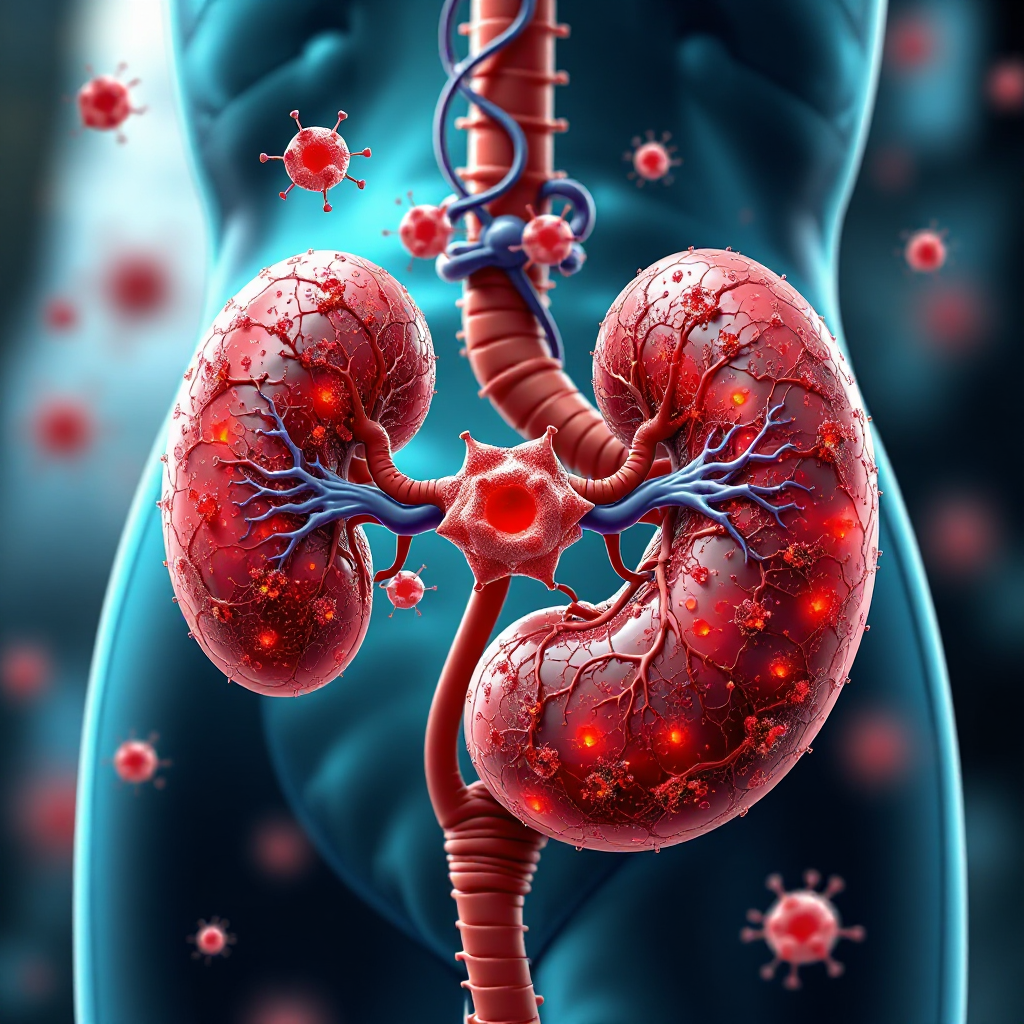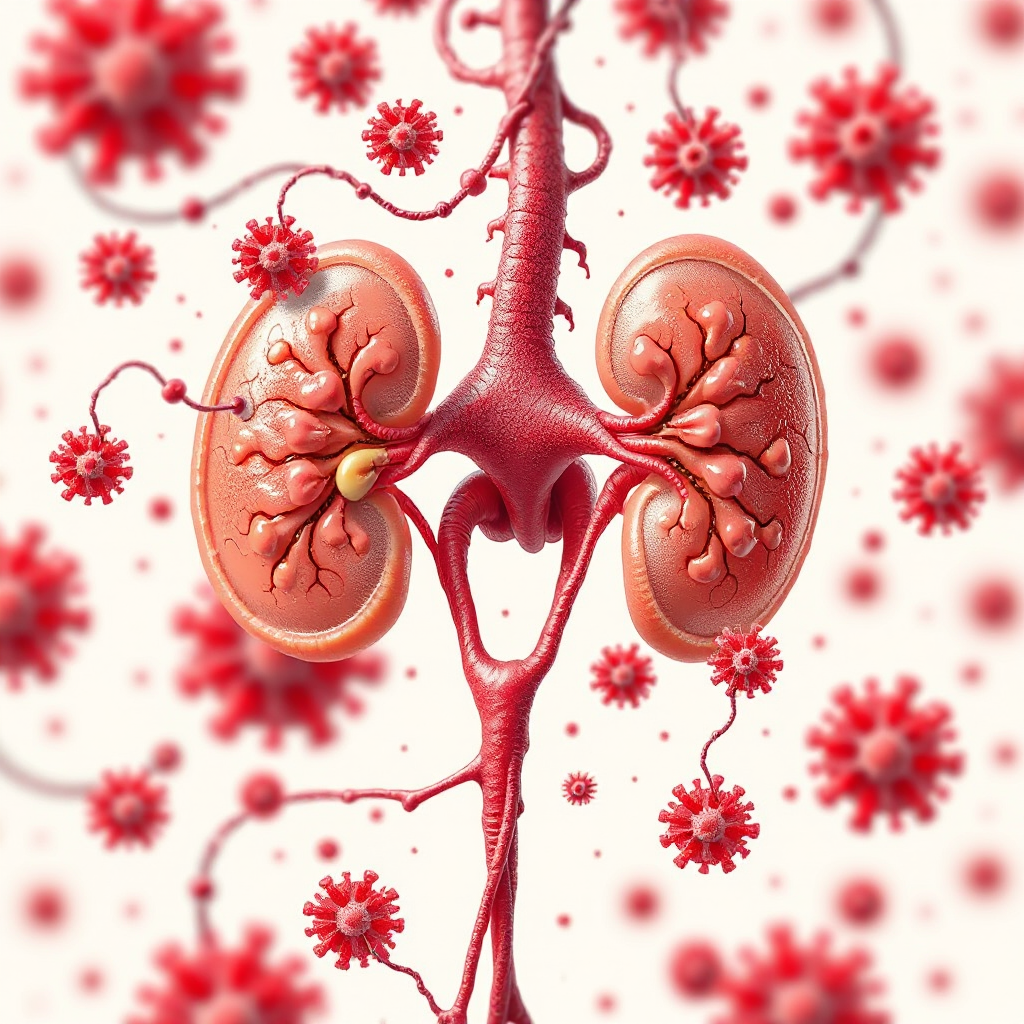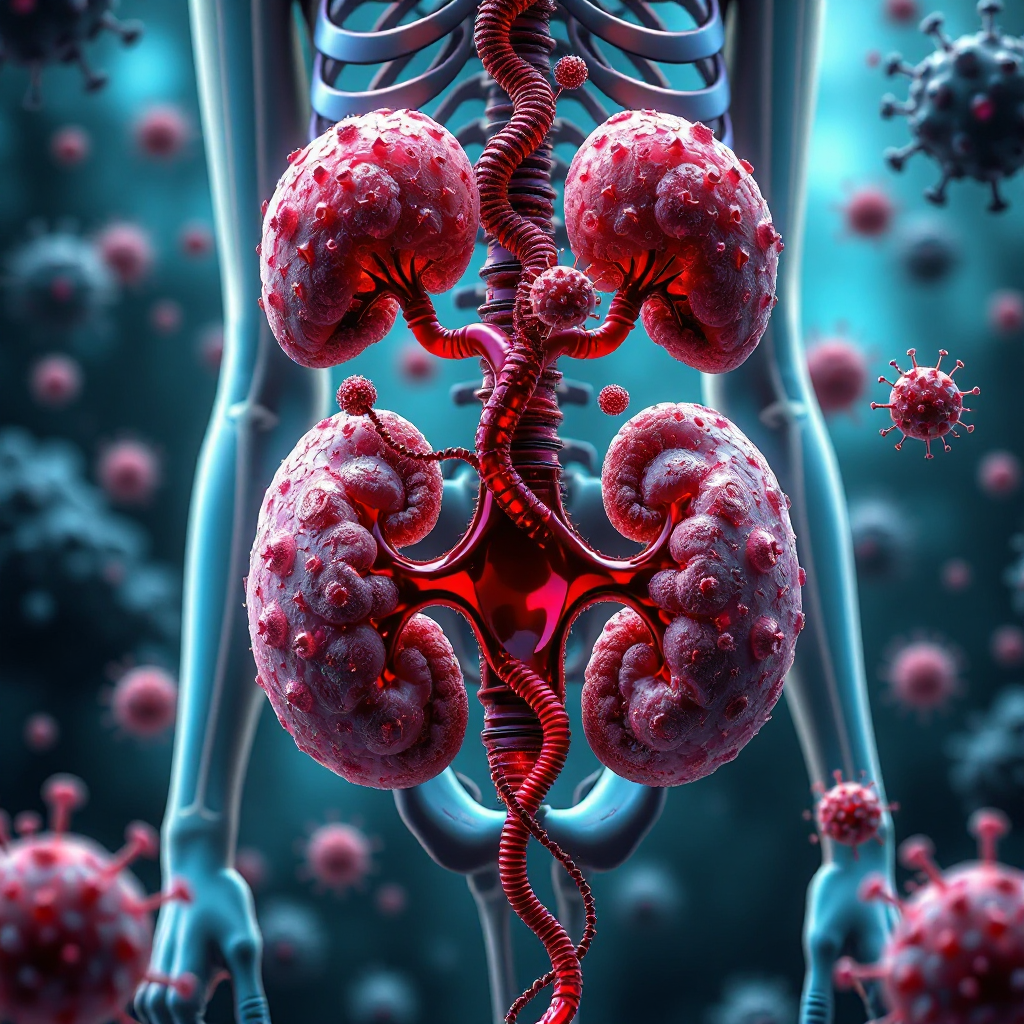What Are the Symptoms and Causes of Ureter and Renal Pelvis Cancer

Ureter and renal pelvis cancer is a rare condition that affects the upper urinary tract. It accounts for less than 5% of all urologic cancers, with an estimated 4,030 new cases in 2023. This cancer often develops due to genetic mutations or prolonged exposure to harmful substances. Smoking significantly increases your risk, with long-term smokers facing up to a 7.2-fold higher likelihood of developing this disease. Symptoms like blood in the urine, back pain, and frequent urination may signal its presence. Early detection plays a crucial role in improving outcomes.
Key Takeaways
Seeing blood in your urine can mean ureter or renal pelvis cancer. If your urine looks pink, red, or brown, visit a doctor quickly.
Smoking makes your chances of getting this cancer much higher. Stopping smoking can lower your risk a lot.
Long-term urinary infections and swelling may cause cancer. Taking care of these problems is very important for staying healthy.
Finding cancer early is very important. If you have back pain or need to pee often, talk to a doctor soon.
Your genes can make your risk higher. If cancer runs in your family, ask your doctor about genetic testing.
Symptoms of Ureter and Renal Pelvis Cancer

Common Symptoms
Blood in the urine (hematuria)
One of the earliest and most common signs of ureter and renal pelvis cancer is blood in the urine. You may notice your urine turning pink, red, or brown. This symptom often appears without pain, making it easy to overlook. Even if the bleeding stops, you should consult a doctor immediately.
Back or side pain
Persistent pain in your back or side, especially near the lower ribs, could indicate a problem in the upper urinary tract. This discomfort may worsen over time or occur intermittently.
Pain or burning during urination
You might experience a burning sensation or pain while urinating. This symptom often mimics a urinary tract infection, but it could signal something more serious.
Frequent or urgent urination
Frequent trips to the bathroom or a sudden, urgent need to urinate can also point to ureter and renal pelvis cancer. These changes in your urinary habits should not be ignored.
Additional Symptoms
Fatigue and unexplained weight loss
Feeling unusually tired or losing weight without trying are common symptoms of many cancers, including ureter and renal pelvis cancer. These signs often occur as your body fights the disease.
Swelling in the lower body
Swelling in your legs, ankles, or feet may develop if the cancer blocks normal urine flow. This blockage can lead to fluid buildup in your lower body.
Recurrent urinary tract infections (UTIs)
Frequent UTIs that do not respond well to treatment could indicate an underlying issue like ureter and renal pelvis cancer. If you experience recurring infections, seek medical advice promptly.
Note: If you notice any of these symptoms, consult a healthcare professional. Early detection can improve treatment outcomes.
Causes and Risk Factors of Ureter and Renal Pelvis Cancer
Causes
Genetic mutations and inherited conditions
Genetic mutations play a significant role in the development of ureter and renal pelvis cancer. These mutations can alter the way cells grow and divide, leading to cancerous changes. Inherited conditions, such as Lynch syndrome, also increase your risk. If you have a family history of cancer, you should discuss genetic testing with your doctor.
Chronic irritation of the kidney
Chronic kidney irritation can contribute to the development of this cancer. Several factors may cause this irritation:
Kidney damage from long-term use of certain medications, especially pain relievers.
Exposure to harmful chemicals used in manufacturing processes.
Smoking, which introduces toxic substances into your urinary system.
These irritants can damage kidney tissues over time, increasing the likelihood of cancer.
Risk Factors
Smoking and tobacco use
Smoking is one of the most significant risk factors for ureter and renal pelvis cancer. It introduces harmful chemicals into your urinary system, which can damage the lining of the ureter and renal pelvis. Long-term smokers face a much higher risk. For example:
Risk Factor | Relative Risk | Notes |
|---|---|---|
4.5 | Smokers for more than 25 years vs. nonsmokers (P < 0.0001) | |
Long-term Smokers | 7.2 | Smokers for more than 45 years |
Occupational exposure to carcinogens
Certain occupations expose you to carcinogens that increase your risk of developing this cancer. Jobs in the petrochemical, plastic, and tar industries are particularly hazardous. Studies estimate that smoking and occupational exposure together account for a significant percentage of cases in men and women.
Chronic urinary infections and inflammation
Recurrent urinary tract infections (UTIs) and chronic inflammation of the urinary system can elevate your risk. Conditions like kidney stones or untreated infections may cause long-term irritation, which can lead to cancerous changes.
Age, gender, and demographic considerations
Your age, gender, and demographic background also influence your risk. This cancer is more common in older adults, particularly those over 60. Men are more likely to develop it than women. Additionally, certain populations with higher exposure to risk factors, such as smoking, may face increased rates of this disease.
Tip: Quitting smoking, staying hydrated, and managing underlying health conditions can help reduce your risk of ureter and renal pelvis cancer.
Diagnosis and Staging of Ureter and Renal Pelvis Cancer

Diagnostic Methods
Imaging tests (CT scans, MRIs)
Doctors rely on imaging tests to detect ureter and renal pelvis cancer. Computed tomographic urography (CTU) is the most effective method for diagnosing this type of cancer. It provides detailed images of the urinary tract, helping doctors identify tumors and assess their size and location. Other imaging techniques, such as MRI scans and ultrasounds, can also detect abnormalities in the urinary system.
Imaging Technique | Effectiveness for Detection |
|---|---|
Computed Tomography (CT) | |
Ultrasound Imaging | Effective for identifying abnormalities |
Ureteroscopy | Used for direct visualization |
These imaging tools allow doctors to evaluate the extent of the disease and plan the next steps in your care.
Urine cytology and biopsy
Urine cytology involves examining a urine sample under a microscope to detect cancer cells. While it is a noninvasive test, its sensitivity is only 29%, and its specificity is 59%. This means it may not always provide a definitive diagnosis. A biopsy, where a small tissue sample is taken from the affected area, offers more accurate results. Doctors often use a combination of these methods to confirm the presence of cancer.
Staging
TNM staging system
The TNM staging system helps classify ureter and renal pelvis cancer based on tumor size (T), lymph node involvement (N), and metastasis (M).
Stage | Description |
|---|---|
Stage 0a | Ta, N0, M0 (Papillary noninvasive carcinoma) |
Stage I | T1, N0, M0 (Tumor invades subepithelial connective tissue) |
Stage II | T2, N0, M0 (Tumor invades the muscularis) |
Stage III | T3, N0, M0 (Tumor invades beyond muscularis into peripelvic fat or kidney) |
Stage IV | T4, N0, M0 (Tumor invades adjacent organs or through the kidney into fat) |
Understanding the stage of cancer helps doctors determine the severity of the disease and the best treatment options.
Importance of staging in treatment planning
Staging plays a critical role in deciding your treatment plan. For example, early-stage tumors (Stage 0a or I) often have a high likelihood of cure, with survival rates exceeding 90%. In contrast, advanced stages (Stage III or IV) may require more aggressive treatments and have lower survival rates.
Tumor Type | Likelihood of Cure |
|---|---|
Superficial, Localized Tumor | > 90% |
Deeply Invasive Tumor | 10 to 15% |
Doctors also consider factors like tumor location, the health of your other kidney, and whether the cancer has recurred. These elements influence the choice of surgery, chemotherapy, or other therapies. Early diagnosis and accurate staging improve your chances of successful treatment.
Treatment Options for Ureter and Renal Pelvis Cancer
Surgical Treatments
Nephroureterectomy
Nephroureterectomy is the most common surgical treatment for ureter and renal pelvis cancer. This procedure involves removing the affected kidney, ureter, and a portion of the bladder. It is highly effective for treating localized tumors. The success rates vary depending on the cancer stage.
Cancer Stage | |
|---|---|
Tis | 82-100% |
Ta | 93-100% |
T1 | 91-95% |
T2 | 70-75% |
T3 | 40-54% |
T4 | 12-14% |
Overall | ~57% |
While this surgery offers high survival rates for early-stage cancers, it may lead to complications such as recurrence or distant metastasis. Long-term outcomes show that about 50% of patients remain recurrence-free after five years.
Endoscopic Surgery
Endoscopic surgery is a minimally invasive option for patients with low-grade tumors. This procedure preserves kidney function by removing only the tumor. It is particularly effective for small, localized cancers.
Aspect | Details |
|---|---|
Effectiveness | Provides survival outcomes comparable to nephroureterectomy for selected patients. |
Limitations | Not suitable for advanced stages or multifocal diseases. |
Five-year CSS rates | Comparable to nephroureterectomy in specific cases. |
Advantages:
Preserves kidney function.
Ideal for low-grade tumors.
Disadvantages:
Requires multiple follow-up procedures.
High recurrence rates, with up to 52% of cases recurring.
Non-Surgical Treatments
Chemotherapy
Chemotherapy is often used for advanced or metastatic cancer. Common drugs include cisplatin, gemcitabine, and mitomycin C. A newer formulation, JELMYTO, delivers mitomycin C directly to the tumor site, improving its effectiveness. These treatments aim to shrink tumors and prevent their spread.
Immunotherapy
Immunotherapy boosts your immune system to fight cancer. Recent advancements include drugs like nivolumab and pembrolizumab, which target specific proteins in cancer cells. Combination therapies, such as enfortumab vedotin with pembrolizumab, have shown promising results, with a 68% overall response rate.
Treatment | Description |
|---|---|
Nivolumab | Adjuvant therapy for patients unfit for platinum-based chemotherapy. |
Pembrolizumab | Used for advanced or metastatic cancer. |
Enfortumab vedotin | Effective after chemotherapy and immunotherapy. |
Combination Therapy | Enfortumab vedotin plus pembrolizumab approved in 2023 for advanced cases. |
Palliative Care
Managing Symptoms and Improving Quality of Life
Palliative care focuses on relieving symptoms and enhancing your quality of life. Radiation therapy can help control pain and bleeding in advanced stages. Chemotherapy, such as gemcitabine with cisplatin, is often used for symptom management.
Palliative Care Strategy | Description | Outcomes |
|---|---|---|
Radiation Therapy | Controls pain and hemorrhage. | Improved survival when combined. |
Chemotherapy | Gemcitabine with cisplatin for better tolerance. | Limited efficacy in metastasis. |
These strategies aim to provide comfort and support, ensuring you maintain the best possible quality of life during treatment.
Ureter and renal pelvis cancer often presents with symptoms like blood in the urine, back pain, and frequent urination. You may also notice fatigue, weight loss, or recurring urinary tract infections. Smoking, exposure to harmful chemicals, and chronic inflammation are significant risk factors. Early diagnosis and treatment greatly improve your chances of recovery. If you experience any of these symptoms, consult a healthcare professional without delay. Detecting the disease early can lead to better outcomes and a higher likelihood of successful treatment.
Key Takeaway: Pay attention to symptoms like hematuria, back pain, and frequent urination. Early action can save lives.
FAQ
What is the first symptom of ureter and renal pelvis cancer?
Blood in the urine (hematuria) is often the first noticeable symptom. Your urine may appear pink, red, or brown. This symptom usually occurs without pain, so it’s important to consult a doctor if you notice any changes in urine color.
Can ureter and renal pelvis cancer spread to other parts of the body?
Yes, this cancer can spread to nearby tissues, lymph nodes, or distant organs. Early detection reduces the risk of metastasis. Regular check-ups and imaging tests help monitor the disease and prevent its progression.
Is ureter and renal pelvis cancer hereditary?
Certain inherited conditions, like Lynch syndrome, increase your risk. If you have a family history of cancer, genetic testing can help identify potential risks. Discuss this with your healthcare provider to take preventive measures.
How can you reduce the risk of developing this cancer?
You can lower your risk by quitting smoking, avoiding exposure to harmful chemicals, and staying hydrated. Managing chronic urinary infections and maintaining a healthy lifestyle also play a key role in prevention.
What should you do if you experience symptoms?
Consult a healthcare professional immediately if you notice symptoms like blood in the urine, back pain, or frequent urination. Early diagnosis improves treatment outcomes and increases the chances of recovery.
Tip: Keep track of any unusual symptoms and share them with your doctor during routine check-ups. Early action can save lives.
See Also
Understanding Bladder Cancer: Symptoms and Underlying Causes
Recognizing Kidney Cancer: Key Symptoms to Look For
Fallopian Tube Cancer: Symptoms and Contributing Factors Explained
Gallbladder Cancer: Identifying Symptoms and Possible Causes
